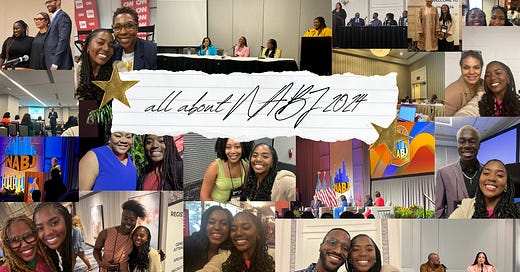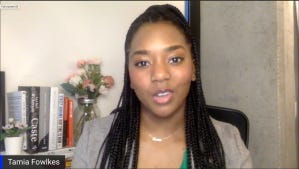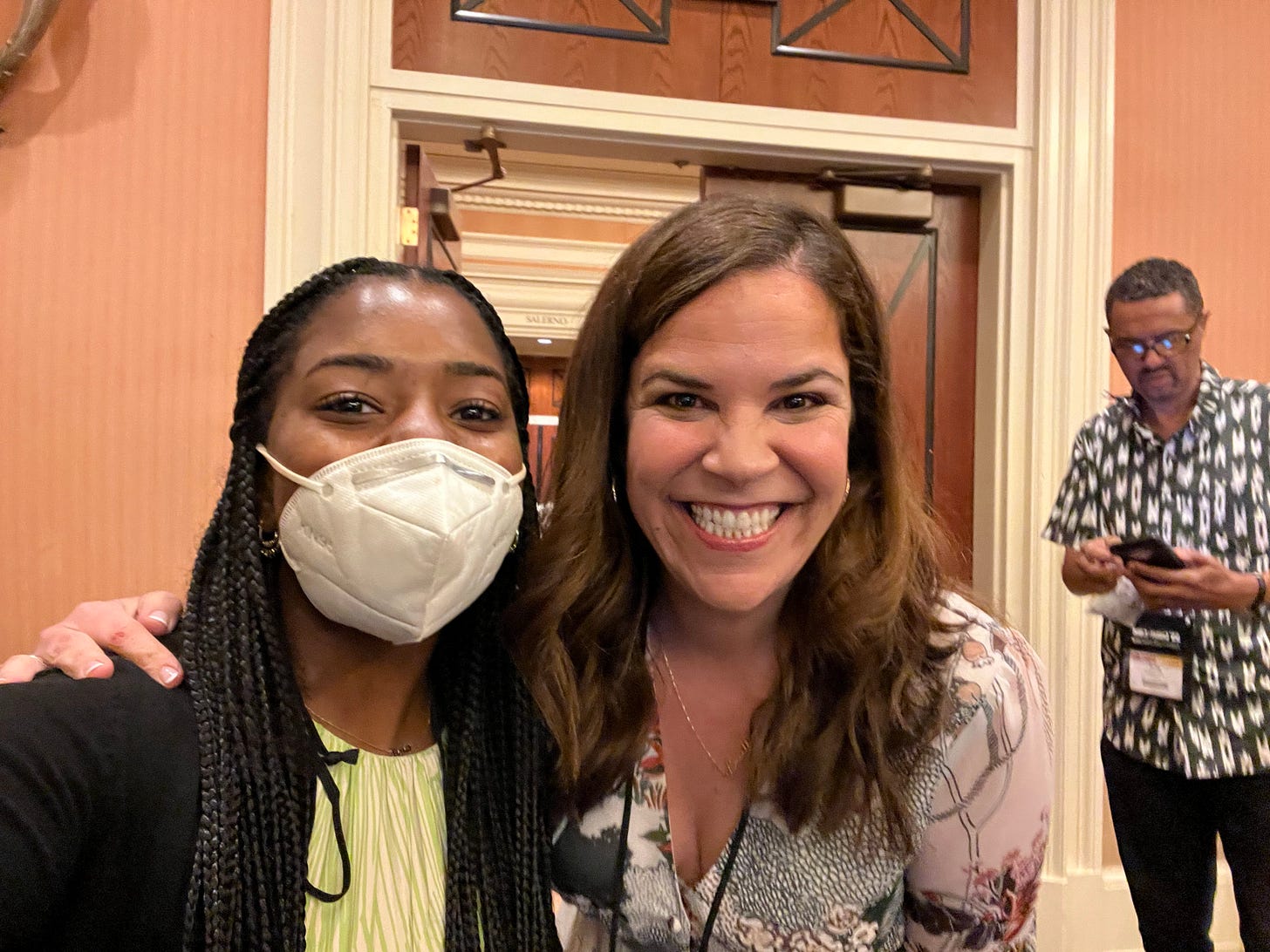all about nabj and its community of black journalists
back after a brief hiatus with thoughts to share from chicago!
Dearest Readers (Tamia Talkers, if you will),
It’s been a minute! How are you? Hopefully well!
Somehow, August is here, and I feel as though I blinked and summer is almost over.
Since June, my schedule has been packed! Many of my sacred Sundays usually reserved for writing were overwhelmed by work commitments and professional pursuits.
Between covering the Republican National Convention, interviewing some artists at a local music festival, sharing a handful of Tamia Talks podcast episodes and wrapping up a series for the Milwaukee Journal Sentinel that I’ve been working on since January, I have had limited time for a more casual essay.
I will never complain about the work, because I have the rare gift of a job that I adore and an insatiable desire to continue growing and improving my journalistic abilities. However, this newsletter was, for two whole weeks, abandoned and absent of my usual chatter.
As I climbed into my seat on an Amtrak train this morning and opened my laptop to write, it felt apt to do some thoughtful reflection. So many of you were DMing me this week and asking if I was in the room when former President Donald Trump participated in a fireside chat at the National Association of Black Journalists Convention.
I was. I even made some TikToks to document it.
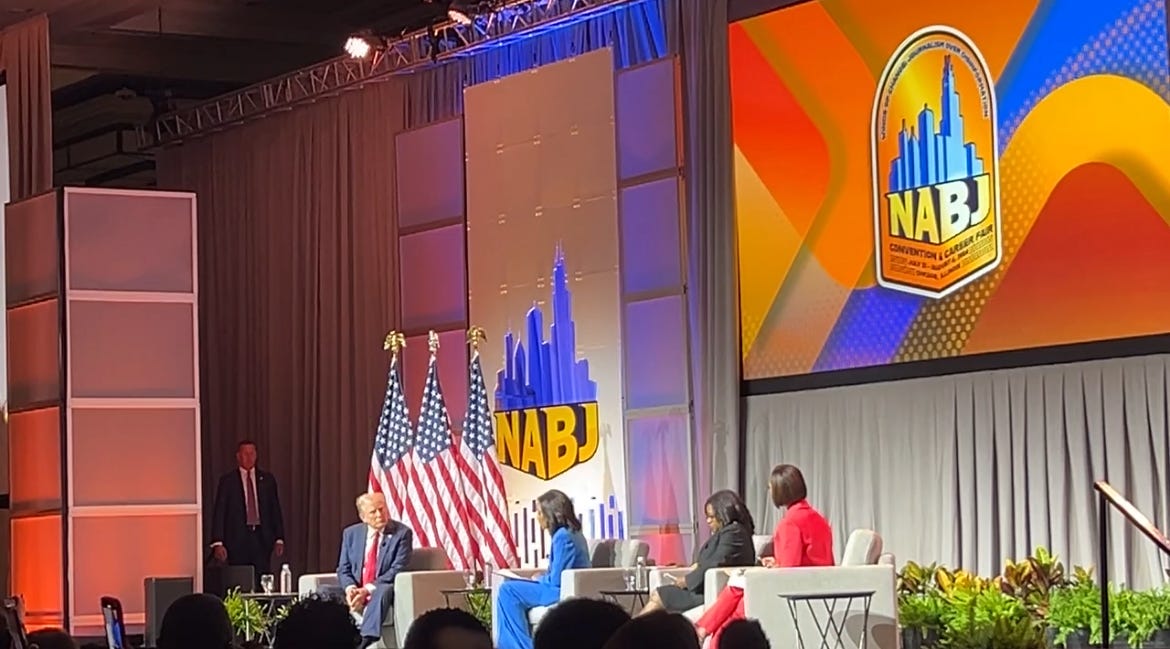
I waited in line for about an hour and a half to get in the door for the event on Wednesday, went through a Secret Service security check, sat in the fourth row of a section on the right side of the ballroom, and made conversation with fellow journalists as we waited an hour for the panel to start.
The journalists in the room were curious about what this conversation would bring. The former president’s history of criticizing and demeaning Black journalists, specifically women, brewed frustration and concern among members of the organization who feared the event would serve as a breeding ground for intensified attacks.
There were thousands of us filling every seat in the room.
I’m sure that in the days since the fireside chat, you’ve seen or heard clips from the interview, so I won’t spend too much time expounding on the details. But, I do recognize that, for many people, this was the first time they had ever heard of the nearly 50-year-old National Association of Black Journalists. After five days of conventioning, I’d love to share a bit about the organization beyond this conversation.
I joined NABJ as a doe-eyed freshman in college awaiting an email from the University of Wisconsin-Madison’s School of Journalism and Mass Communication letting me know that I was accepted into the journalism program.
NABJ’s student-focused programs were one of the first places I found a community outside of my college campus. In 2021, I participated virtually in the NABJ Multimedia Short Course hosted by the historically-Black college North Carolina A&T. Among the four-day training’s dozens of workshops, student participants produced a newscast and wrote stories for a news site. I served as the anchor for the 2021 newscast, and I remember it being one of the first times I had to squash my soul-crushing feelings of imposter syndrome to attempt to do something I loved. Good journalism.
The program connected me to a dozen professional journalists who offered career advice and support. I established friendships with gifted journalists, like Callie Lawson-Freeman, Noella Williams and Kirstyn Clark. I earned an NABJ scholarship that helped support my academic studies and ran for a position on the organization’s Board of Directors several months later, clinching the role of Student Representative in August 2021.
Since joining NABJ, I have helped to develop journalism training programs for students at historically Black Universities, interviewed fellow members of the organization like Nikole Hannah Jones, New York Times reporter and creator of “ The 1619 Project," and attended conventions, both virtually and in-person.
All of my experiences granted me opportunities to develop reporting ideas, improve my writing and reporting ability and meet with recruiters from companies where I would eventually work and intern like USA Today - Network, MSNBC and The Washington Post.
The events have offered entry into critical conversations about the evolution of the journalism landscape through world-shifting moments like the COVID-19 pandemic and annual election cycles while also providing a space for reporters of all ages and experiential backgrounds to learn and build community with one another.
Every year, I am astounded by the people I have the opportunity to be in the same room as.
I've sat in sessions with journalists like Kat Stafford, the Global Race and Justice Editor at Reuters, who led the development of the Associated Press series “From Birth to Death” an examination of health disparities like maternal mortality, asthma, mental illness, high blood pressure and Alzheimer’s that are statistically more likely to threaten the lives African American people.
Learned from the work of journalists like Tre’vell Anderson and Corey Antonio Rose, whose reporting and service in NABJ has helped expand the depth of arts and culture coverage and thoughtfully highlight the experiences of LGBTQ+ people across the United States.
Broadcast and radio heavy-hitters like Abby Phillip, Yamiche Alcindor, Audie Cornish, Rachel Scott, Lester Holt, and more regularly make appearances, all of them sharing stories from days spent reporting during moments of national crisis, questioning political leaders like Vladimir Putin and seeking to inform a divided nation.
This week, I met Pulitzer Prize-winning photojournalist Michelle Agins, the second Black woman hired as a staff photographer at The New York Times in 1989. Agins gained the trust and mentorship of legendary photographer Gordon Parks and shared a friendship with James Baldwin.
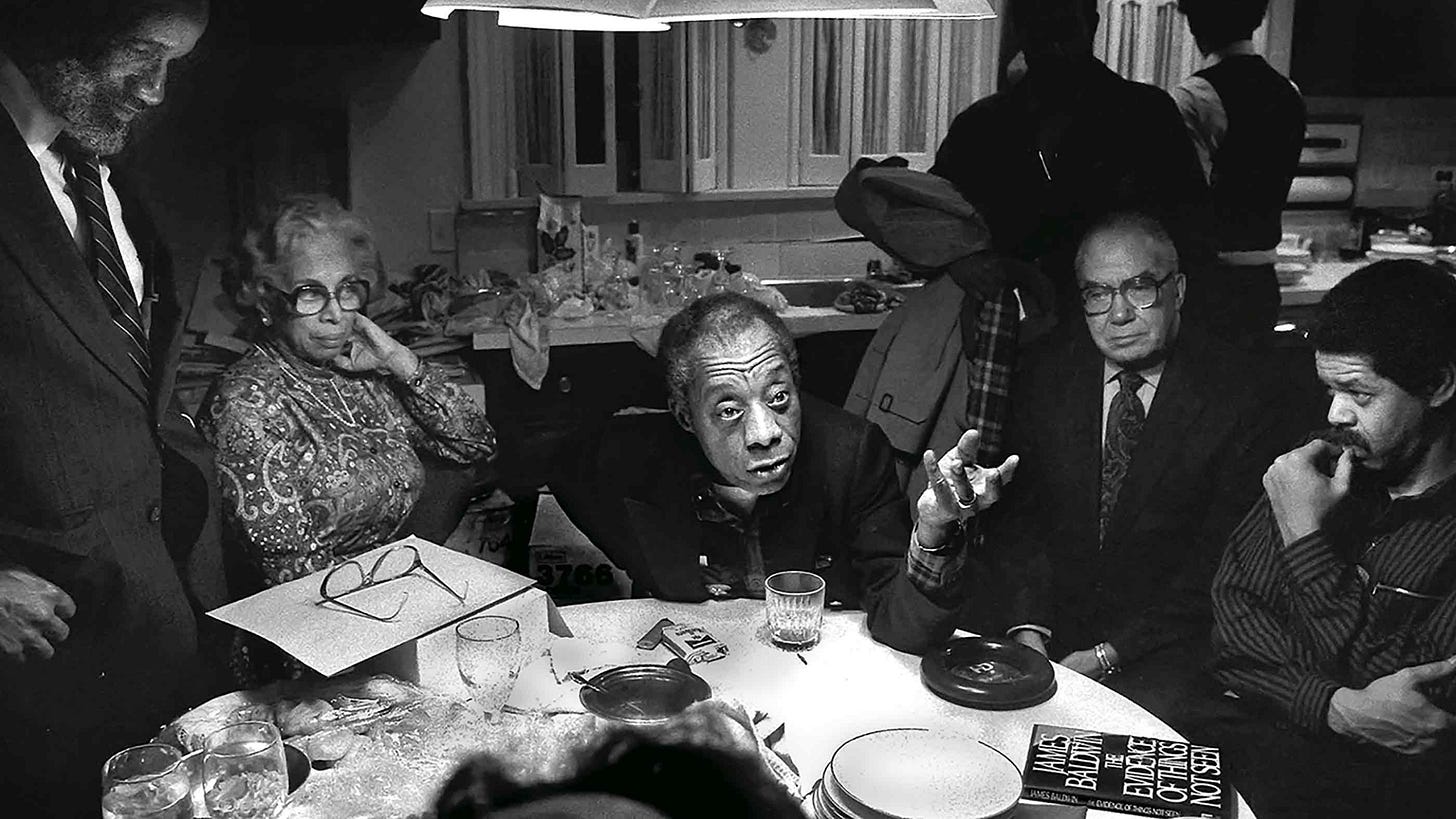
In 2022, I ran into actor and recent star of “Merrily We Roll Along” Lindsay Mendez in the hallway after a panel about her television show “All Rise.” I told her that I’d been in a production of “Godspell” during high school and listened to her songs from shows like “Dogfight” constantly. My inner theatre kid lept out! But what was I to do when presented with such a lovely unexpected encounter!
All this to say, the magic of the organization is directly bound to the people it brings together and the possibility it instills in journalists to tell stories that make positive change, raise awareness about unseen issues, and help us all, as readers, viewers, and listeners, better understand what is happening in parts of the world we have never explored.
For me, someone who grew up longing to see a reflection of myself and my community in both bylines and the stories I saw every day, the experience is a dream come true.
This year, I got to participate in my first in-person panel, and, to my delight, it was focused on students. I hope that I get a chance to help support the next generation of journalists like everyone I have mentioned has helped to support and teach me.
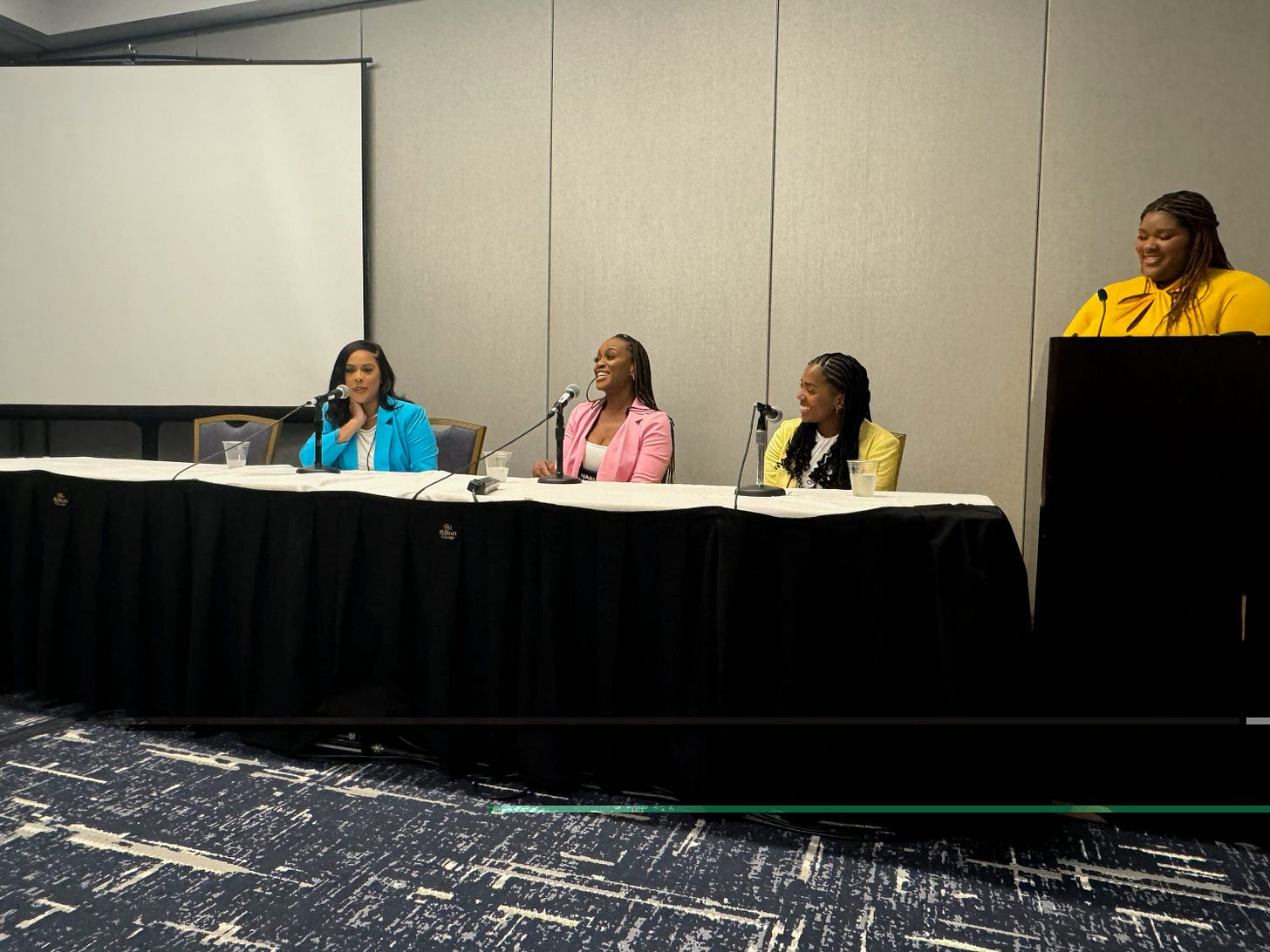
As I walk away from this jam-packed week, I had to take a moment to express my gratitude for all the people who make NABJ Convention what it is, and the environment that offers opportunity for introduction, reconnection and community, especially in tough moments.
With another NABJ conquered and many more to come, I look forward to seeing the organization continue to grow, evolve and provide space for its members to flourish. In the meantime, I’ll encourage you to follow, read and listen to the work of the reporters mentioned above and find some whose names I missed. I can guarantee they’ve got some good stories to come.


